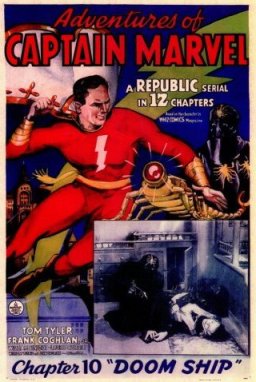
Adventures of Captain Marvel is a 1941 American 12-chapter black-and-white movie serial from Republic Pictures, produced by Hiram S. Brown, Jr., directed by John English and William Witney, that stars Tom Tyler in the title role of Captain Marvel and Frank Coghlan, Jr. as his alter ego, Billy Batson. The serial was adapted from the popular Captain Marvel comic book character, then appearing in the Fawcett Comics publications Whiz Comics and Captain Marvel Adventures. The character is now owned by DC Comics and is known as Shazam.

Bruce Bennett was an American film and television actor who prior to his screen career was a highly successful college athlete in football and in both intercollegiate and international track-and-field competitions. In 1928 he won the silver medal for the shot put at the Olympic Games held in Amsterdam. Bennett's acting career spanned more than 40 years. He worked predominantly in films until the mid-1950s, when he began to work increasingly in American television series.
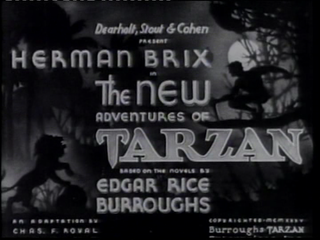
The New Adventures of Tarzan is a 1935 American film serial in 12 chapters starring Herman Brix. The serial presents a more authentic version of the character than most other film adaptations, with Tarzan as the cultured and well-educated gentleman in the original Edgar Rice Burroughs novels. It was filmed during the same period as the Johnny Weissmuller/Metro-Goldwyn-Mayer Tarzan films. Film exhibitors had the choice of booking the serial in 12 episodes, the feature film, or the feature film followed by 11 episodes of the serial.

The Great Alaskan Mystery is a 1944 Universal film serial about government agents trying to stop Nazi spies from getting their hands on futuristic weapons.

Drums of Fu Manchu (1940) is a 15-chapter Republic serial film based on the character created by Sax Rohmer. Though using the title of the ninth novel in the series, it actually is based on numerous elements from throughout the series to that point, cherry-picked by the writers. It starred Henry Brandon, William Royle and Robert Kellard. It was directed by the successful serial team constituee by William Witney and John English and is often considered one of the best serial films ever made.

Daredevils of the Red Circle (1939) is a 12-chapter Republic Movie Serial starring Charles Quigley, David Sharpe, Herman Brix, Carole Landis, Miles Mander and Charles Middleton. It was directed by William Witney and John English and is considered one of the better serials produced by Republic. The serial was the fourteenth of the sixty-six serials produced by the studio.

The Fighting Devil Dogs (1938) is a 12-chapter Republic movie serial starring Lee Powell and Herman Brix, the latter better known by his later stage name, Bruce Bennett. It was directed by William Witney and John English. While not often considered a great serial, as it contains much stock footage and two recap chapters, it is famous for its main villain, the Lightning—the first costumed supervillain. There is some speculation that George Lucas used the Lightning as a template for Darth Vader.
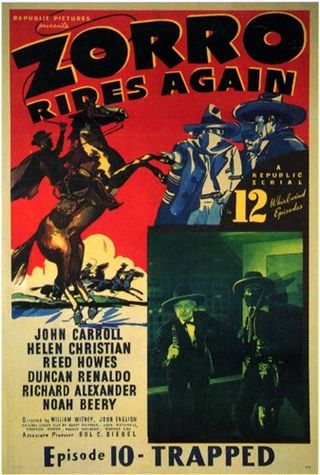
Zorro Rides Again (1937) is a 12-chapter Republic Pictures film serial. It was the eighth of the sixty-six Republic serials, the third with a Western theme and the last produced in 1937. The serial was directed by William Witney & John English in their first collaboration. The serial starred John Carroll who also sang the title song as a modern descendant of the original Zorro with Carroll stunt doubled by Yakima Canutt. The plot is a fairly standard western storyline about a villain attempting to illicitly take valuable land. The setting is a hybrid of modern (1930s) and western elements that was used occasionally in B-Westerns. It was also the first in a series of five Zorro serials, followed by Zorro's Fighting Legion (1939), Zorro's Black Whip (1944), Son of Zorro (1947) and Ghost of Zorro (1949).

The Adventures of Red Ryder is a 1940 American 12-chapter movie serial from Republic Pictures, directed by William Witney and John English and starring Don "Red" Barry and Noah Beery, Sr., based on the Western comic strip Red Ryder by Fred Harmon. This serial is the 18th of the 66 serials produced by Republic.

Jungle Girl is a 1941 15-chapter Republic serial starring Frances Gifford. It was directed by William Witney and John English based on the novel Jungle Girl (1932) by Edgar Rice Burroughs. It was the 22nd of the 66 serials produced by Republic.

Dick Tracy's G-Men (1939) is a 15-Chapter Republic movie serial based on the Dick Tracy comic strip by Chester Gould. It was directed by William Witney and John English.

King of the Royal Mounted (1940) is a Republic Pictures northern serial based on the King of the Royal Mounted comic strip directed by William Witney and John English.

The Lone Ranger Rides Again is a 1939 American Republic serial. It was a sequel to Republic's 1938 serial The Lone Ranger, which had been highly successful, and the thirteenth of the sixty-six serials produced by Republic.
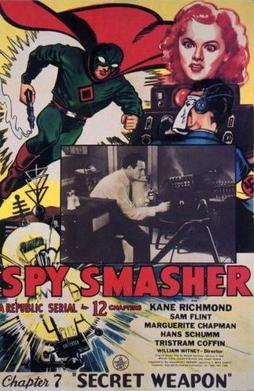
Spy Smasher is a 12-episode 1942 Republic serial film based on the Fawcett Comics character Spy Smasher which is now a part of DC Comics. It was the 25th of the 66 serials produced by Republic. The serial was directed by William Witney with Kane Richmond and Marguerite Chapman as the leads. The serial was Chapman's big break into a career in film and television. Spy Smasher is a very highly regarded serial. In 1966, a television film was made from the serial footage under the title Spy Smasher Returns.
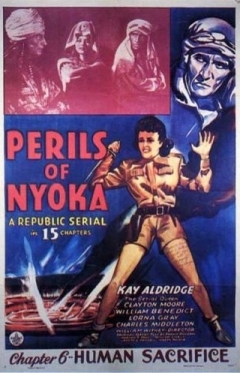
Perils of Nyoka is a 1942 Republic serial directed by William Witney. It stars Kay Aldridge as Nyoka the Jungle Girl, a character who first appeared in the Edgar Rice Burroughs-inspired serial Jungle Girl.
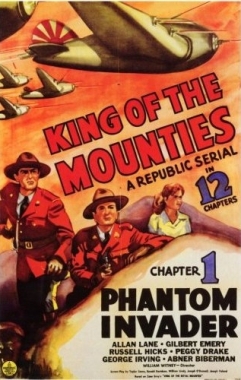
King of the Mounties is a 1942 Republic 12-chapter film serial, directed by William Witney. Allan Lane played Sgt. Dave King of the Mounties, with Peggy Drake as heroine Carol Brent, and Abner Biberman played the villainous Japanese admiral Yamata.
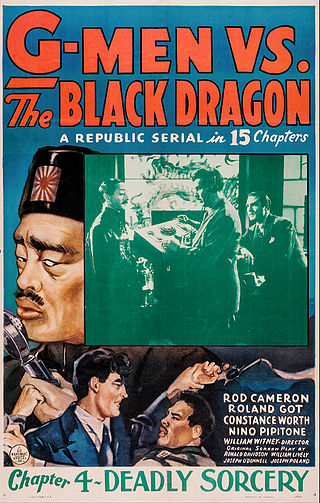
G-Men vs. The Black Dragon (1943) is a Republic Pictures movie serial. It is noteworthy among adventure serials as containing an unusually high number of fistfights, all staged by director William Witney and a team of stuntmen.

The Call of the Savage (1935) is a Universal serial based on the story Jan of the Jungle by Otis Adelbert Kline. It was directed by Lew Landers and released by Universal Pictures.
Flaming Frontiers (1938) is a Universal movie serial starring Johnny Mack Brown. It was a remake of Heroes of the West (1932). It was re-edited into a TV series in 1966. Much of the material was reused in Lon Chaney Jr.'s 1942 serial Overland Mail.

Mystery of the River Boat is a 1944 Universal movie serial directed by Lewis D. Collins and Ray Taylor. It co-starred Lyle Talbot, Robert Lowery and Mantan Moreland.















